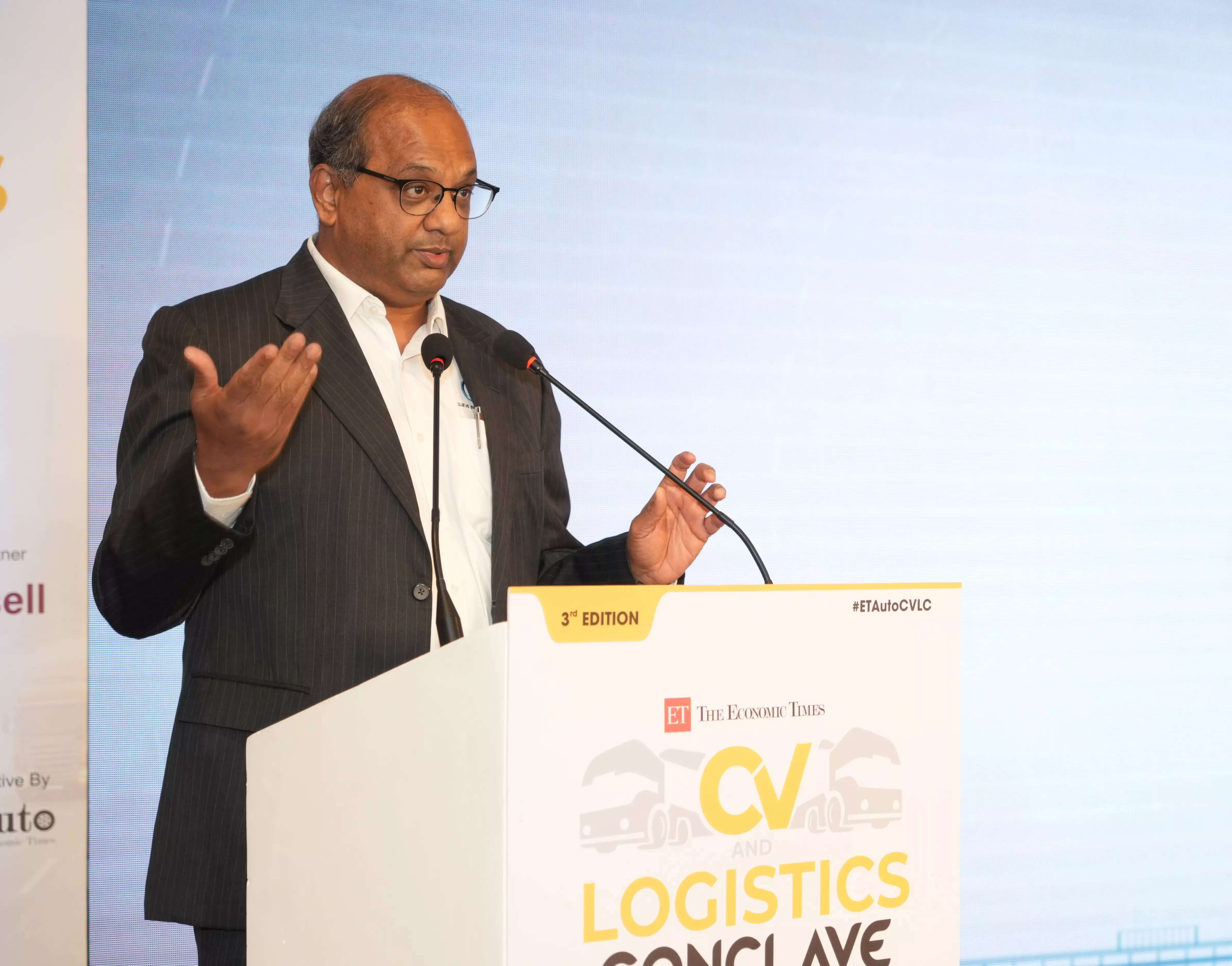
New Delhi: Bringing down the logistics cost in India to about 9%-10% of the GDP, from the present 13%-14% will be a substantial achievement, said Sukumar Kameswaran, CEO, TVS Supply Chain Solutions (TVS SCS). A high logistics cost hampers India’s competitiveness, particularly in the manufacturing sector, when compared with competing countries.
TVS SCS, a subsidiary of TVS Mobility Group, is a leading supply chain management company catering to diverse sectors.
According to the CEO, India needs to have a clear policy, strong infrastructure and low logistics costs to fulfil its vision to be among the top 25 logistics hubs. The whole ecosystem including logistics companies, infrastructure providers, and manufacturers also require a great degree of collaboration to enable the customers to get the best at the optimum cost.
“The government has articulated the National Logistics Policy and there has been a massive push in terms of infrastructure including airports, highways, and ports. Movement on toll gates has become faster and the ease of doing business is getting better. However, the Indian logistics costs account for about 13%-14% of the gross domestic product (GDP), which is much higher than that at single digits in the developed economies,” Kameswaran said at The Economic Times CV & Logistics Conclave 2024.
Meanwhile, there has been a debate on the assessment of logistics costs in the country. In December 2023, a report by economic think tank National Council of Applied Economic Research (NCAER) and the Department for Promotion of Industry and Internal Trade (DPIIT) stated that India’s logistics costs ranged between 7.8%-8.9% during 2021-22. Globally, there are different methodologies to calculate logistics costs at a macroeconomy level.
In September 2022, government launched the National Logistics Policy to “reduce the cost of logistics in India to be comparable to global benchmarks by 2030, improve the Logistics Performance Index (LPI) ranking with an endeavour to be among top 25 countries by 2030, and create data driven decision support mechanism for an efficient logistics ecosystem”. In addition, there is PM Gati Shakti, which was launched in 2021.
Integrating interconnection in supply chains
With an increased focus on make in India for the world, the country is becoming an important part of the global supply chain. As a logistics company, this not just gives us an opportunity to grow but brings in a responsibility to play an important role in feeding the global supply chain, Kameswaran stated.
He pointed out four megatrends- digitalisation, sustainability, skilling, and globalization- that are taking shape in the logistics sector.
Digitalisation including internet of things (IoT), artificial intelligence (AI), machine learning (ML) has accelerated the real time operations of an entire network of interconnection between a lot of logistics service providers, customers, customer vendors in one large mesh. Telematics is also being leveraged to get real time updates of the vehicle and its driving conditions.
“The way we operate our transport and warehouse management systems’ platforms, their linkage to customer systems and their ability to give real time data has become the key in the whole process. We use AI for quality check on packing and loading, and IoT for impact sensors, call loggers, temperature checkers. It helps to keep a track of real time operations and maintain an interconnected supply chain,” he said.
“If one has to be competitive and sustainable in the logistics sector, there is no other choice but to digitalise. If not, one will probably have to go back by 25 years,” he added.
If one has to be competitive and sustainable in the logistics sector, there is no other choice but to digitalise. If not, one will probably have to go back by 25 years~
To bring efficiency and streamline the on-ground operations, Government’s Unified Logistics Interface Platform (Ulip) is also being used by logistics companies to monitor cargo movement, track consignments, manage inventory and get secure access to information. The platform is integrated with systems of about seven ministries and covers several data fields.
Talking about the need for sustainability, Kameswaran said it can be implemented in two ways – in transport operations to reduce the carbon emissions, and in packaging to move away from single use wood, plastics, and cardboards.
As per the International Energy Agency (IEA), road transport in India accounts for about 12% of India’s energy-related carbon dioxide emissions, and is a key contributor to air pollution. Over the years, e-commerce has also grown tremendously and opened opportunities in the last mile connectivity domain. Electric vehicles (EVs), which are considered green, are the new focus area for all the OEMs.
TVS SCS currently runs a few last mile deliveries on electric bikes. “We will be inducting electric trucks into our fleet,” the CEO said.
Switching to reusable and recyclable materials in packaging makes the movement of goods on commercial vehicles (CVs) fast and enables loading and unloading at hubs quicker.
We will be inducting electric trucks into our (TVS SCS) fleet~
Lastly, the leading integrated supply chain solutions provider in India noted the importance of making investments in training and skilling of the workforce. “Compared to the earlier days when you would have people being picked, being brought in and trained for maybe 15 days, now you have to have somebody ready in two days because the attrition rate has increased in the sector.”
In its global operations, TVS SCS is using the lighthouse technology which is a logistics control tower optimised by digitisation and machine learning.















